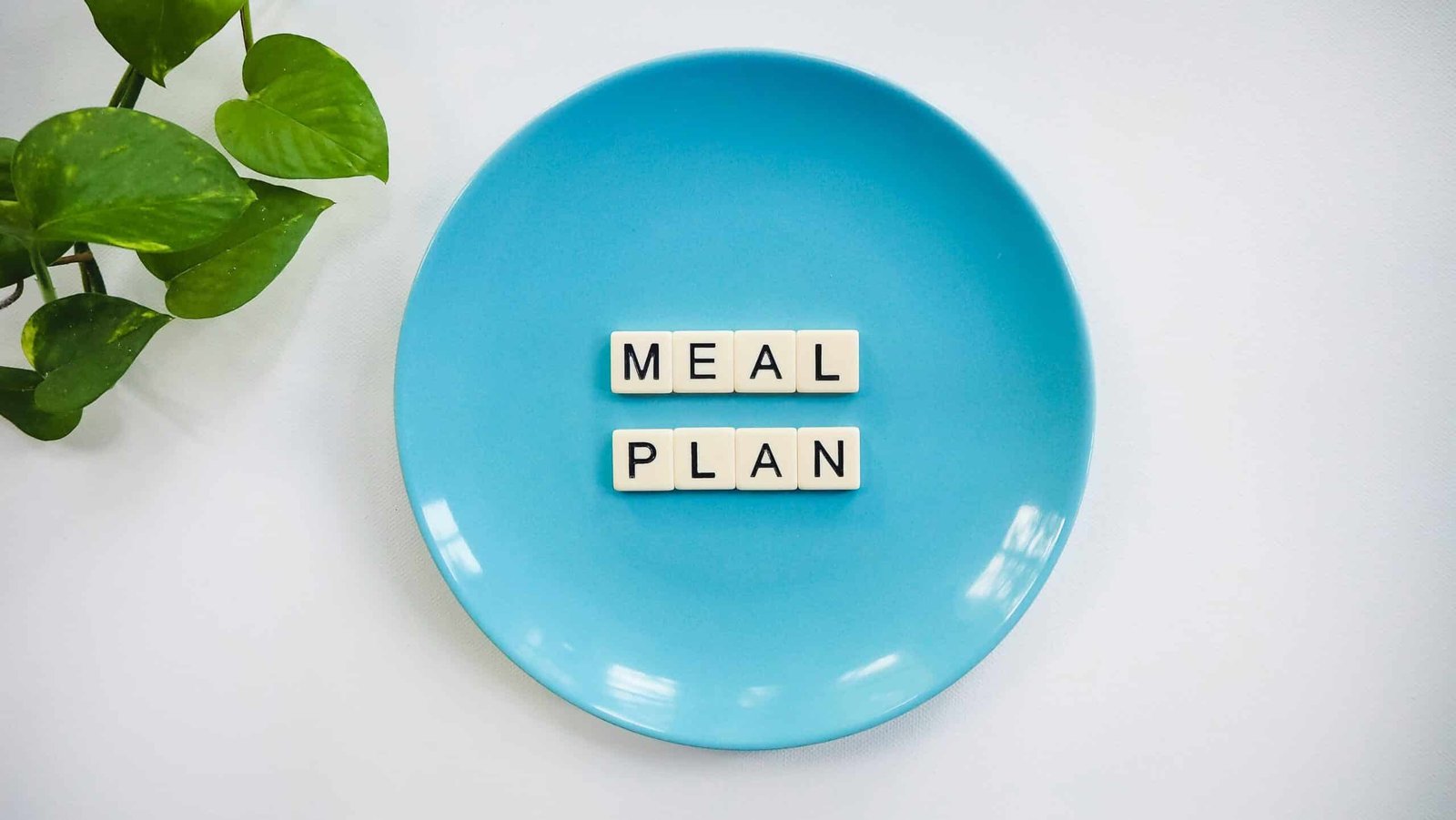
The keto diet is one of the most popular and effective ways to lose weight and improve your health. But what exactly , and how does it work? In this post, we will answer these questions and more, and give you some tips on how to start and follow the keto diet successfully.
Table of Contents
What is the keto diet?
Is a low-carb, high-fat, moderate-protein diet that puts your body into a state of ketosis. Ketosis is a metabolic state where your body burns fat instead of glucose (sugar) for energy. This can help you lose weight, lower your blood sugar, and improve your health.
Is based on the principle that by limiting your carb intake, you can force your body to use fat as its main fuel source. When you eat carbs, your body breaks them down into glucose, which is then used for energy or stored as glycogen in your liver and muscles. When you eat more carbs than your body needs, the excess glucose is converted into fat and stored in your body.
However, when you eat very few carbs, your body runs out of glucose and glycogen, and has to find another way to get energy. This is when your liver starts to produce ketones, which are molecules made from fat that can be used for energy by your brain and other organs. When your body produces enough ketones to meet your energy needs, you are in ketosis.
How does the keto diet work?
It’s works by changing the way your body uses energy. By eating very few carbs, you lower your insulin levels, which is the hormone that regulates your blood sugar and fat storage. This allows your body to access your stored fat and burn it for energy. This can lead to rapid weight loss, especially in the first few weeks of the diet.
It’s also works by suppressing your appetite and increasing your satiety. By eating more fat and protein, you feel fuller and more satisfied, which can help you eat less and reduce your cravings. This can also help you stick to the diet and avoid cheating.
It’s can also work by improving your health and well-being. Many studies have shown that the keto can have positive effects on various health conditions, such as diabetes, epilepsy, Alzheimer’s disease, cancer, and more. The keto can also improve your mood, mental clarity, energy levels, and sleep quality.
What to eat and avoid on the keto diet?
Is based on eating foods that are low in carbs, high in fat, and moderate in protein. The general rule is to eat less than 50 grams of net carbs per day, which are the total carbs minus the fiber. However, some people may need to eat less or more carbs, depending on their activity level, body type, and goals.
Is not a one-size-fits-all diet, and you can customize it to suit your preferences and needs. However, some common foods to eat and avoid on the keto diet are:
Foods to eat
- Meat: beef, pork, lamb, chicken, turkey, etc.
- Seafood: fish, shellfish, shrimp, etc.
- Eggs: whole eggs or egg whites
- Cheese: cheddar, mozzarella, parmesan, etc.
- Nuts and seeds: almonds, walnuts, sunflower seeds, etc.
- Healthy oils: olive oil, coconut oil, avocado oil, etc.
- Low-carb vegetables: leafy greens, broccoli, cauliflower, zucchini, etc.
- Low-carb fruits: berries, avocado, lemon, etc.
- Keto-friendly snacks: dark chocolate, pork rinds, cheese crisps, etc.
Foods to avoid
- Grains: wheat, rice, oats, corn, etc.
- Starchy vegetables: potatoes, sweet potatoes, carrots, etc.
- Legumes: beans, lentils, peas, etc.
- High-sugar fruits: bananas, apples, grapes, etc.
- Sugary foods: candy, cake, cookies, ice cream, etc.
- Processed foods: chips, crackers, cereal, etc.
- Sugary drinks: soda, juice, sports drinks, etc.
- Alcohol: beer, wine, liquor, etc.
Sample keto meal plan

To give you an idea of what a typical day on the keto looks like, here is a sample keto meal plan for one day:
- Breakfast: scrambled eggs with cheese and bacon
- Lunch: chicken salad with avocado and olive oil dressing
- Dinner: steak with butter and broccoli
- Snacks: almonds, dark chocolate, cheese crisps
Tips for success on the keto diet
The keto can be challenging to start and follow, especially if you are used to eating a lot of carbs. However, with some planning and preparation, you can make the keto diet easier and more enjoyable. Here are some tips for success :
- Plan your meals and snacks ahead of time. This will help you avoid temptation and stay on track with your keto goals. You can use online tools or apps to calculate your macros and calories, and find keto-friendly recipes and ideas.
- Stock up on keto-friendly foods and ingredients. This will help you avoid running out of food and resorting to non-keto options. You can also buy some keto-friendly snacks and treats to satisfy your sweet tooth and cravings.
- Drink plenty of water and electrolytes. This will help you stay hydrated and prevent keto flu, which is a common side effect of the keto diet. Keto flu can cause symptoms such as headache, fatigue, nausea, and constipation, and it usually goes away after a few days. You can prevent or reduce keto flu by drinking enough water and replenishing your electrolytes, such as sodium, potassium, and magnesium.
- Monitor your ketone levels. This will help you know if you are in ketosis and how well you are adapting to the keto diet. You can measure your ketone levels using urine strips, blood meters, or breath analyzers. However, keep in mind that ketone levels are not the only indicator of keto success, and you should also pay attention to your weight, body fat, and overall health and well-being.
- Be patient and consistent. The programme can take some time and adjustment to work, and you may not see results right away. However, if you stick to the programme and follow the guidelines, you will eventually reach your goals and enjoy the benefits of the keto lifestyle.
Benefits and drawbacks of the keto diet
The keto has many benefits, but it also has some drawbacks. Here are some of the pros and cons of the keto diet:
Benefits
- Weight loss: help you lose weight quickly and effectively, by burning fat and suppressing appetite. Many studies have shown that the keto can lead to greater weight loss than other diets, especially in the long term.
- Health improvement: help you improve your health and prevent or treat various diseases, such as diabetes, epilepsy, Alzheimer’s disease, cancer, and more. The keto diet can lower your blood sugar, insulin, and inflammation levels, and improve your brain function and mood.
- Satisfaction and enjoyment: help you feel satisfied and happy, by eating delicious and filling foods, such as meat, cheese, eggs, and nuts. The keto diet can also reduce your cravings and hunger, and make you feel more energetic and alert.
Drawbacks
- Side effects: cause some side effects, especially in the beginning, such as keto flu, bad breath, constipation, muscle cramps, and insomnia. These side effects are usually temporary and can be avoided or minimized by following the tips above.
- Restriction and adaptation: The keto diet can be restrictive and hard to follow, especially if you are used to eating a lot of carbs. The keto diet can also take some time and effort to adapt to, and you may experience some fluctuations in your performance and mood during the transition.
- Sustainability and balance: The keto diet can be hard to sustain and balance, especially in the long term, as it may limit your food choices and social interactions. The keto diet can also be challenging to follow if you have certain medical conditions, allergies, or preferences. You may need to consult your doctor and nutritionist before starting the keto diet, and adjust it according to your needs and goals.
What are the rules to a keto diet?
Here are some general rules for following a keto diet:
- Low Carbohydrate Intake: The key to a keto diet is reducing carbohydrate intake significantly. Typically, this involves consuming no more than 20-50 grams of net carbs per day. Net carbs are calculated by subtracting fiber from total carbs.
- High Fat Intake: The majority of your daily calories should come from healthy fats. This includes sources such as avocados, nuts, seeds, olive oil, and fatty fish. The idea is to replace the energy derived from carbohydrates with fats.
- Moderate Protein Intake: Protein is an essential part of the diet, but it should be consumed in moderate amounts. Excessive protein intake may lead to the body converting protein into glucose, which could hinder ketosis. A moderate protein intake is generally around 15-25% of total daily calories.
- Stay Hydrated: Adequate hydration is important on any diet. Drinking water helps with digestion, and staying hydrated is crucial, especially during the initial stages of keto when there may be increased water loss.
- Include Low-Carb Vegetables: Non-starchy vegetables low in carbs and high in fiber can be included in the diet. These vegetables provide essential vitamins and minerals without significantly impacting carb intake.
- Limit or Avoid Sugar and Processed Foods: Foods high in sugar and processed carbohydrates are restricted on the keto diet. This includes sugary beverages, candies, pastries, and most packaged snacks.
- Watch for Hidden Carbs: Some foods may contain hidden carbohydrates that can add up quickly. It’s essential to read labels and be aware of the carb content in sauces, dressings, and other condiments.
- Monitor Ketone Levels: Some people on the keto diet use ketone test strips or blood meters to monitor their ketone levels and ensure they are in a state of ketosis.
- Plan Meals: Planning meals in advance can help ensure that you are meeting your macronutrient goals and not accidentally consuming too many carbs.
- Consult with a Healthcare Professional: Before starting any significant diet change, including the keto diet, it’s advisable to consult with a healthcare professional or a registered dietitian, especially if you have any underlying health conditions.
Individual responses to the keto diet can vary, and it may not be suitable for everyone. It’s essential to listen to your body and make adjustments as needed.
The keto diet is a low-carb, high-fat, moderate-protein diet that can help you lose weight and improve your health. The keto diet works by putting your body into ketosis, where it burns fat instead of glucose for energy. The keto diet can have many benefits, but it also has some drawbacks. The keto diet is not for everyone, and you should do your own research and consult your doctor and nutritionist before starting the keto diet. If you decide to try the keto diet, you should follow the guidelines and tips in this post, and enjoy the keto journey.




[…] not exceed the recommended dosage. A varied, balanced diet and a healthy lifestyle are important. A nutritional supplement is no substitute for a varied diet. […]
[…] balanced diet and a healthy lifestyle are important. A dietary supplement is no substitute for a varied diet. Keep out of reach of children. Do not take this supplement if you are pregnant or breastfeeding. […]
[…] low-carb, high-fat eating plan, the Ketogenic Diet aims to trigger ketosis, prioritizing fat as the primary energy source. Advocates suggest benefits […]
[…] a healthier, leaner you? We understand that finding the right resources for a successful ultimate keto diet can be challenging. That’s why we’re thrilled to introduce our exclusive limited-time […]
[…] Ketobiotic diet combines the keto diet and a diet that helps your gut. This helps with weight loss, metabolism, gut, and overall […]